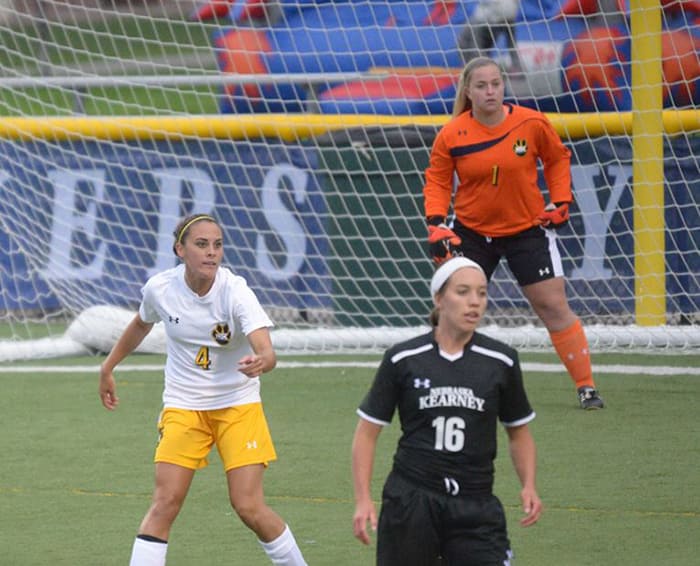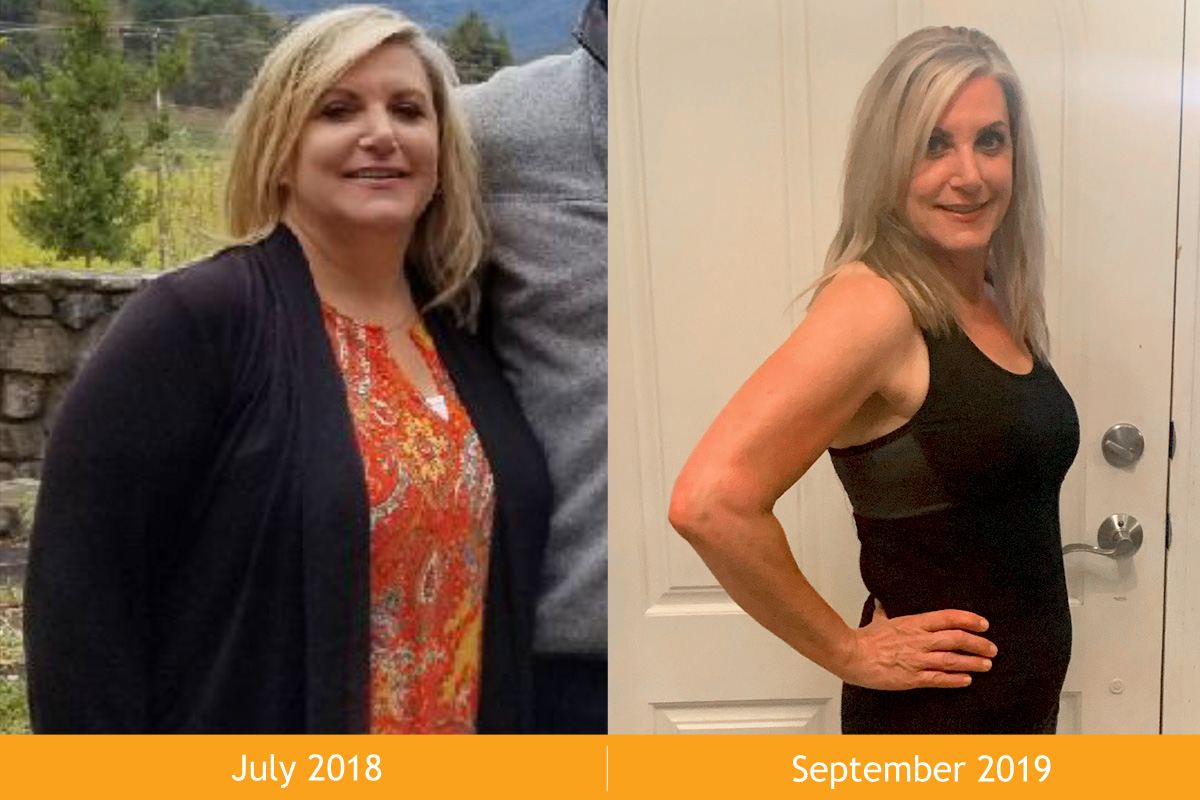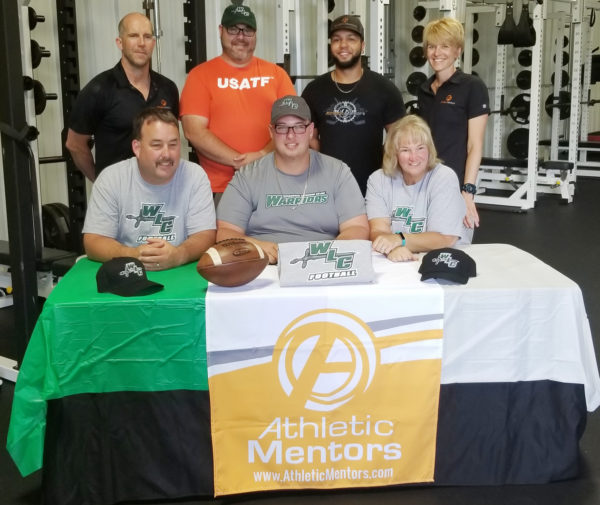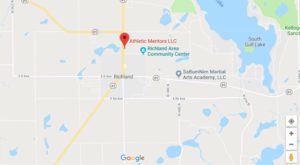 Maggie Harma goalkeeping for the Wayne State College Wildcats.
Maggie Harma goalkeeping for the Wayne State College Wildcats. It’s no secret that high-level training, proper conditioning, and resilience will contribute to the creation of an above-average athlete. Three local soccer players made that commitment years ago when they began training with Athletic Mentors. Besides having strong dedication to their sport in common, Maggie Harma, Carley Rice, and Kendra Sosnoski are all Gull Lake High School graduates and now collegiate athletes. Kudos to our trio of alumni!
In the first of this inspiring series, allow us to introduce you to Maggie Harma.
Up Close and Personal with Maggie Harma
Harma began her career as a goalkeeper at 10–years-old and joined AM her sophomore year of high school. Her career at Gull Lake High School was comprised of 53 shutouts, a 93.7 save percentage, and two MHSAA state titles. Harma was confident that she wanted to play soccer in college, so she took every opportunity possible to improve at AM.
“My coaches at school kept me technically skilled, but once I started training with Athletic Mentors, I feel like I became a better, stronger, faster player,” she said. Having already learned collegiate lifts and participating in conditioning routines, Harma was ahead of most freshman and physically ready to take on Division II athletics.
Harma spent her freshman season at Wayne State College in Wayne, Nebraska, studying a pre-professional degree. Her transition was one of the most extreme.
“The transition from high school to college, especially with athletics is insane,” she said. “You have to be 100 percent dedicated and in love with your sport, or you will grow to resent it.”
In addition, Harma said that as a student-athlete who’s pushing their limits, she learned a lot about herself fairly quickly. “You realize what you can do – managing a difficult school schedule, attending practices and conditioning, and balancing meets and a social life,” she said.
As she recalls her first season, Harma is elated to have contributed to the Wildcat soccer squad. She had the honor of starting most games as their goalkeeper and because the program is being rebuilt, helped the team drastically improve their statistics by cutting the goals scored on them in half, doubling the amount of shots and doubling the amount of scored goals.
“It was really good for me to get to play as a freshman. I was able to work out the kinks of the system and adjust to the game,” she said.
Her first year at WSC has still been trying, though. Being far away from her family and friends left her feeling mentally weak and not as fully committed. She half-wanted to be in Michigan, and half-wanted to be at WSC. The greatest thing she has learned can be used as advice for all college-bound athletes:
“It’s so much easier said than done, but jump in with two feet. You have to completely submerge yourself,” Harma said. “In order to be successful, you have to fully understand that this is the next chapter of your life, and embrace where you’re going.”
In order to full commit herself to school and soccer, Harma has made the decision to transfer to a school closer to home. Although this isn’t the answer for everyone, she feels that her performance and dedication will increase immensely at a location that’s more of a fit. She plans to condition hard through the summer and hopes to earn a starting spot on the squad of her next team. Look for Harma next fall at a college or university much closer to you!





 Athletic Mentors
Athletic Mentors